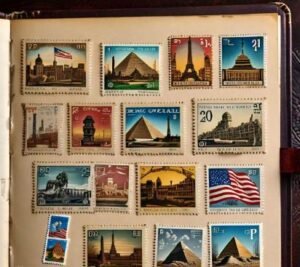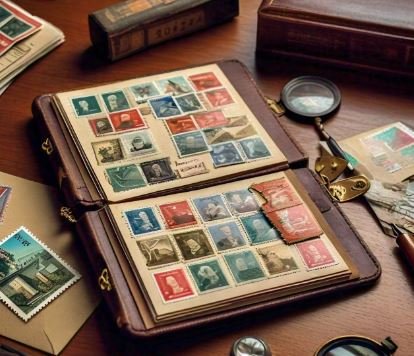Stamp collecting, also known as philately, has long been a beloved hobby for enthusiasts around the world. For over a century, stamps have captured not only the attention of collectors but also the hearts of those who appreciate their historical and artistic value. However, as with many traditional hobbies, the legacy of stamp collecting: celebrating a passion or confronting its decline has become a topic of debate in recent years. In the digital age, where instant communication and technology dominate, some question whether stamp collecting is a hobby on the rise or a fading tradition.

In this article, we will explore the legacy of stamp collecting from two perspectives: the enduring passion it evokes among collectors and the challenges it faces in the modern world. Is stamp collecting a celebration of history, art, and culture, or is it a pastime at risk of losing relevance in an increasingly digital society?
Celebrating the Passion: The Enduring Allure of Stamp Collecting
Stamp collecting has survived for more than 150 years, and its legacy continues to thrive in many ways. For countless collectors, the legacy of stamp collecting is an ongoing celebration of history, art, and personal achievement. Here’s why the passion for stamp collecting is still alive and well:
1. A Window into History
Each stamp is a tiny window into a specific moment in history. Whether commemorating a political event, a scientific discovery, or a cultural milestone, stamps tell stories. Enthusiasts of philately take immense pride in curating collections that reflect the rich tapestry of human achievement. The legacy of stamp collecting lies in its ability to capture these stories and preserve them for future generations.
For example, stamps from the early 20th century can shed light on important historical events such as the end of World War I, the rise of aviation, or the cultural shifts of the Roaring Twenties. Every stamp is a piece of history, and collectors seek to preserve this legacy through careful research, cataloging, and study.
2. Artistic Appreciation
Stamps are not only historical artifacts; they are also works of art. The intricate designs, vibrant colors, and creative use of symbols reflect the cultural significance of the time they were created. The legacy of stamp collecting includes the appreciation of these miniature masterpieces, often designed by renowned artists and illustrators.
Collecting stamps with beautiful designs or unusual themes allows collectors to celebrate artistic creativity. Over the years, stamps have featured everything from national landmarks and famous personalities to wildlife and abstract art. This fusion of art and history keeps stamp collecting a compelling hobby for those who love beauty and craftsmanship.

3. A Global Community
One of the most rewarding aspects of the legacy of stamp collecting is the sense of community it fosters. Philatelists come together across the globe to share knowledge, exchange stamps, and collaborate on research. Stamp shows, conventions, and online forums offer opportunities for collectors to connect with others who share their passion.
The camaraderie within the stamp-collecting world is a key part of why this hobby endures. Collectors often form friendships that span decades, united by their shared appreciation for stamps. Whether through casual swaps or formal auctions, the sense of belonging within the philatelic community keeps the legacy of stamp collecting alive.
Confronting the Decline: Challenges in the Modern Era
While the legacy of stamp collecting remains cherished by many, the hobby is not without its challenges. As society becomes increasingly digital, traditional hobbies like stamp collecting are at risk of becoming less popular. Let’s examine some of the key factors contributing to the potential decline of stamp collecting:
1. The Rise of Digital Communication
In an era of instant communication through email, text messages, and social media, the need for traditional mail and postage has diminished significantly. The legacy of stamp collecting is directly tied to the function of stamps in the postal system, but with the decline in physical mail, the role of stamps in everyday life has diminished.
With fewer people sending physical mail, there is less exposure to stamps, especially among younger generations. This leads to fewer people getting involved in stamp collecting, as they may not have the same familiarity or emotional connection to stamps as those who grew up using them. The decline of the postal system’s importance threatens the long-term relevance of stamp collecting.
2. Digital Collecting and Technology
Technology has transformed the way people collect. Today, there are digital platforms where collectors can view and even trade virtual stamps, which may lack the tactile appeal of physical collecting. While digital collecting is an emerging trend, it poses a challenge to the traditional practice of collecting physical stamps.
Moreover, the ease of accessing stamps through online auctions and dealers has led to the rise of a more transactional approach to collecting, as opposed to the leisurely pursuit of hunting for rare stamps in person. This shift in collecting practices may affect the long-term sustainability of the legacy of stamp collecting, as it moves further away from its traditional roots.
3. The Aging Collector Base
Another challenge facing the legacy of stamp collecting is the aging demographic of its core collectors. Many of the most dedicated collectors are older individuals who have been engaged in the hobby for decades. While new collectors still emerge, the rate of growth is slow, and the average age of stamp collectors is rising.

As older collectors pass on or lose interest, there is concern that younger generations may not be as inclined to take up the hobby. Stamp collecting, while still thriving in some pockets, may not be attracting enough new blood to sustain its growth in the future. This poses a challenge to the legacy of the hobby, as its future vitality hinges on attracting a younger audience.
Is There Hope for the Legacy of Stamp Collecting?
Despite the challenges, there is reason for optimism. The legacy of stamp collecting can continue to thrive if the hobby adapts to the changing landscape. Here are a few ways this can happen:
1. Embracing Modern Technology
Philately can embrace technology to stay relevant. Digital catalogs, virtual stamp exhibitions, and online stamp trading platforms offer new opportunities for collectors to engage with stamps in ways that were not possible before. By integrating technology into the hobby, stamp collecting can appeal to younger, tech-savvy generations.
2. Educating the Younger Generation
In order to preserve the legacy of stamp collecting, it is essential to introduce the hobby to younger people. Schools, libraries, and philatelic societies can play a role in educating young collectors about the history and value of stamps. Interactive exhibits, educational programs, and stamp clubs can engage children and teenagers, helping them understand the richness of philately and the value of collecting.
3. Modernizing Stamp Design
Another way to celebrate the legacy of stamp collecting is through the continued innovation of stamp designs. Postal authorities can create stamps that appeal to modern interests, such as pop culture, technology, and global issues. By staying current with contemporary topics, stamp collecting can remain relevant and attract new collectors.

Conclusion
The legacy of stamp collecting: celebrating a passion or confronting its decline presents both a celebratory and a cautionary tale. While the hobby has a rich history and continues to inspire passion among collectors, it faces significant challenges in the modern age. The decline in physical mail, the rise of digital collecting, and the aging demographic of collectors all pose threats to the long-term sustainability of stamp collecting.
However, with a renewed focus on education, modernization, and embracing technology, the legacy of stamp collecting can be preserved and revitalized for future generations. By celebrating its historical and artistic value while adapting to new trends, the legacy of stamp collecting can continue to thrive, offering both new and seasoned collectors the opportunity to connect with history and culture in a deeply personal way.




